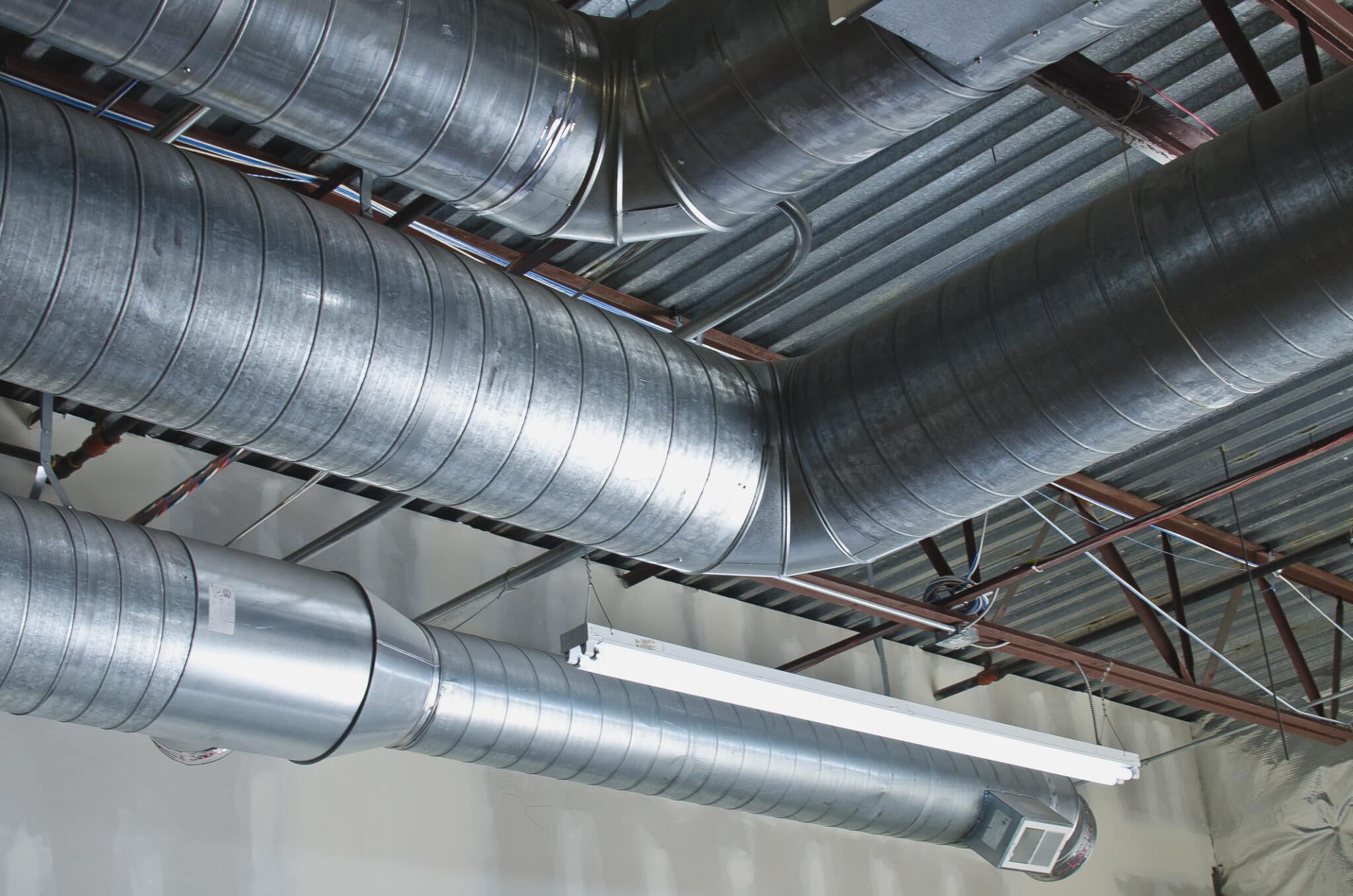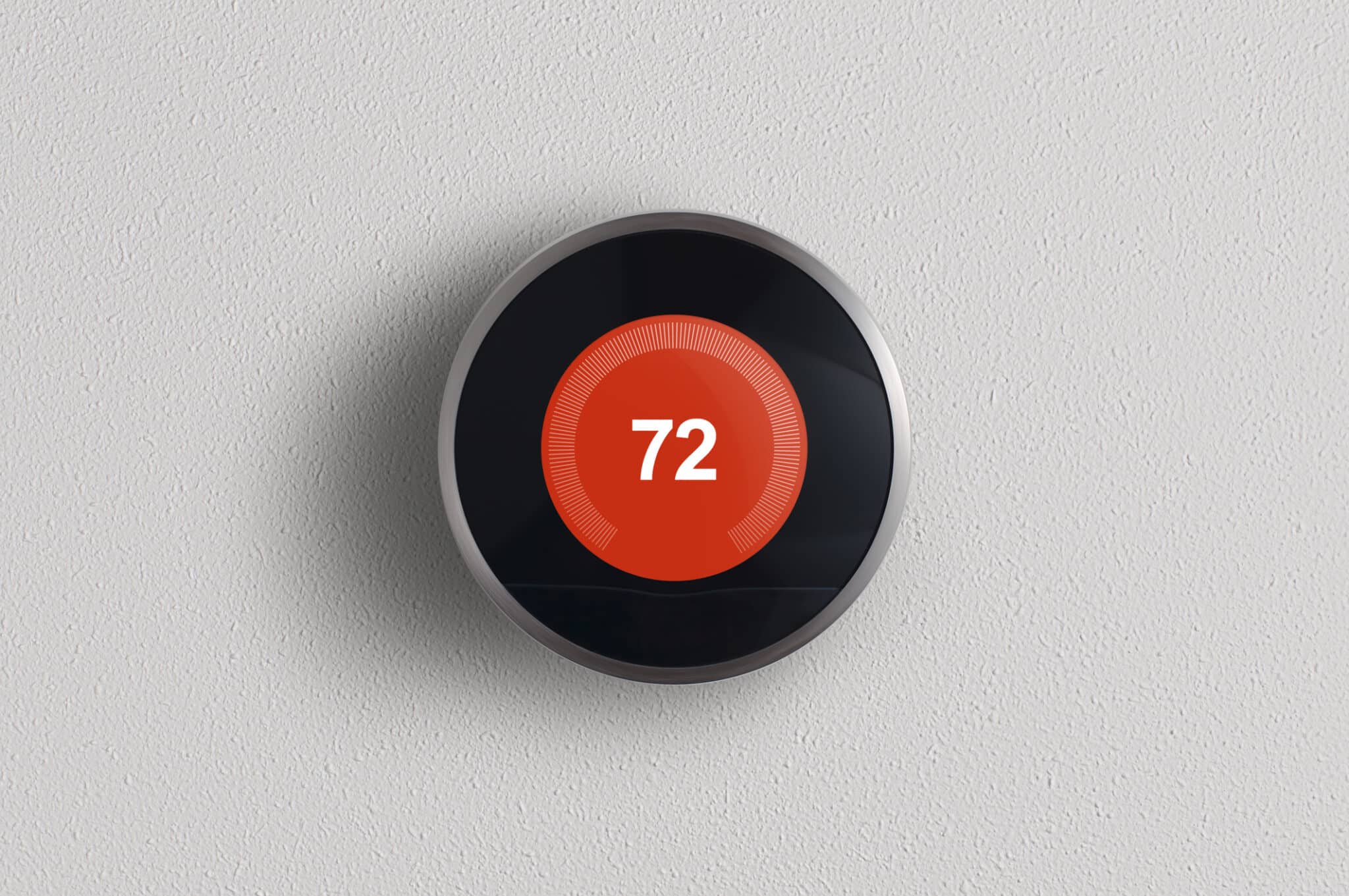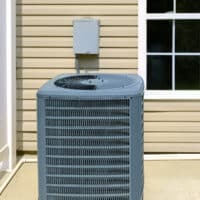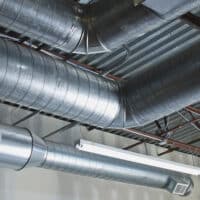Advanced Ductwork Designs for Modern Homes in Phoenix

How can advanced ductwork transform your home’s comfort and energy efficiency in Phoenix’s extreme heat? By optimizing airflow and reducing energy waste, modern designs ensure better air quality and consistent cooling. One Hour Air Conditioning & Heating of Phoenix, AZ specializes in cutting-edge ductwork solutions that keep your home cool while lowering energy costs.
How Modern Ductwork Minimizes Air Leaks and Ensures Proper Airflow Distribution
In Arizona’s extreme climate, where temperatures can exceed 100°F, efficient ductwork is vital for maintaining a comfortable home. Modern ductwork solutions are designed to tackle common issues like air leaks and poor airflow distribution, offering homeowners a range of benefits:
- Up to 30% of air can be lost through leaks in outdated duct systems. This not only leads to uneven cooling but also wastes energy, forcing your HVAC system to work harder.
- Modern ductwork designs focus on sealing all possible leaks, ensuring air flows exactly where it’s needed. The result? A 20% increase in energy efficiency, helping you save on monthly cooling costs.
- Insulated ducts provide even more benefits, improving temperature consistency by up to 15%. This prevents the system from overworking to balance indoor temperatures, especially in regions like Phoenix and Scottsdale where outdoor temperatures are extreme.
- Proper airflow distribution is also essential. Well-designed duct systems maintain consistent airflow, preventing hot or cold spots in different rooms, which enhances overall comfort.
- Moreover, sealed ducts help keep out dust, pollen, and other contaminants, significantly improving indoor air quality. This is especially important in desert regions where dust and allergens are common.
With these innovations, One Hour Air Conditioning & Heating of Phoenix, AZ offers cutting-edge ductwork solutions that improve energy efficiency, reduce costs, and ensure a healthier living environment, making modern ductwork a smart investment for Arizona homeowners.
Eco-Friendly Materials in Ductwork Construction
As sustainability becomes more critical, the materials used in ductwork construction are evolving. Today’s eco-friendly options not only lower environmental impact but also enhance home energy efficiency and improve indoor air quality.
- Recycled metals: Choosing ductwork made from recycled steel or aluminum reduces the need for new raw materials, slashing energy consumption by 75% during production. Not only does this save natural resources, but it also provides the same durability and strength as new metal, making it ideal for both new builds and retrofits.
- Low-VOC sealants: Traditional sealants can release harmful volatile organic compounds (VOCs), affecting both the environment and indoor air quality. Low-VOC sealants, however, minimize these emissions, improving indoor air by up to 30%. This is crucial for homes in Phoenix and Scottsdale, where reducing indoor pollutants can significantly improve air quality, especially in hot, dusty climates.
- Biodegradable insulation: Using natural, biodegradable insulation reduces landfill waste and improves energy efficiency by 15-20%. This insulation keeps the air within ducts at a consistent temperature, lowering the workload on your HVAC system and contributing to reduced energy bills.
For homeowners committed to sustainable living, these materials offer more than environmental benefits—they deliver tangible savings and healthier indoor spaces. One Hour Air Conditioning & Heating of Phoenix, AZ incorporates these cutting-edge, eco-friendly materials in every installation, ensuring that your ductwork not only performs efficiently but also aligns with your green values.

Smart Ductwork Technology for Modern Homes
Imagine having complete control over your home’s HVAC system from anywhere. Smart ductwork technology is revolutionizing how we manage energy and comfort, allowing for greater control and efficiency.
Smart thermostats
These devices adapt to your schedule, learning when to cool or heat your home. By optimizing energy use, smart thermostats can save up to 15% on your annual energy bill—particularly valuable in regions with extreme climates like Arizona.
Integrated sensors
Sensors placed strategically throughout the house detect temperature fluctuations, humidity levels, and air quality. By automatically adjusting the airflow, these systems enhance efficiency by 15-20%, ensuring your home remains comfortable without wasting energy.
Remote control and automation
With smart ductwork, homeowners can remotely control their system through a smartphone app, adjusting temperatures, scheduling operation times, and monitoring energy use. This level of automation can cut overall energy consumption by up to 20%, making a noticeable impact on both comfort and utility bills.
The combination of smart thermostats, sensors, and remote control offers a streamlined approach to home comfort, minimizing energy waste while giving homeowners full control. Smart ductwork systems are designed to adjust to your lifestyle, providing both convenience and savings, all while ensuring your home remains efficiently cooled or heated.
Exposed Ductwork as a Design Feature
Exposed ductwork is no longer reserved for industrial spaces—it’s a striking design element that brings both style and functionality to modern homes. More than just a necessity for air circulation, exposed ducts add a bold, industrial aesthetic that enhances contemporary interiors.
- A bold design statement: Exposed ductwork turns something functional into a visual centerpiece. Its sleek, metallic lines fit perfectly with industrial, minimalist, or modern home designs, creating a unique blend of raw and polished elements. High ceilings and open floor plans are ideal spaces to showcase exposed ducts, turning them into architectural features that enhance your home’s character rather than hide it.
- Practical for Phoenix homes: Homes in Phoenix, many of which have flat roofs or lack attics, are perfect candidates for exposed ductwork. Instead of costly hidden systems that require extensive modification, exposed ducts offer a practical, cost-efficient solution. They’re easier to install and maintain, making them a great option for both new builds and renovations.
- Boosting energy efficiency: Beyond its aesthetic appeal, exposed ductwork can improve energy efficiency. When ducts are placed within conditioned spaces, less air is lost through temperature fluctuations, ensuring your HVAC system operates more efficiently. This is crucial in Phoenix’s hot climate, where minimizing cooling costs is a priority for homeowners.
Exposed ductwork not only elevates your home’s design but also delivers real, measurable benefits. It merges modern style with enhanced energy efficiency, making it a smart, forward-thinking choice for any homeowner looking to combine practicality with cutting-edge design.
Ductwork Considerations for Flat-Roof Homes in Phoenix
Flat-roof homes, common in Phoenix and Scottsdale, present unique challenges for ductwork installation. Traditional duct systems can be difficult to fit in these designs, but modern solutions offer ways to maximize both efficiency and aesthetics.
- Limited space constraints: Flat roofs typically have limited attic or crawl space for duct installation. This makes it harder to hide ducts, and improper installation can lead to airflow inefficiencies. Modern designs, however, make use of low-profile ductwork, which fits snugly into narrow spaces, ensuring optimal airflow without compromising ceiling height or interior space.
- Heat exposure concerns: With ducts running closer to the roof, they’re often exposed to more heat. This can reduce energy efficiency, leading to higher cooling costs in Arizona’s scorching climate. Insulating ducts with high R-value materials reduces heat transfer, keeping conditioned air cooler as it travels through the system. Well-insulated ducts can improve system efficiency by up to 20%, saving homeowners significant energy costs.
- Aesthetic integration: Homeowners often worry about the visual impact of exposed ductwork on flat roofs. Custom painted ducts or low-profile designs can blend seamlessly with a home’s architecture, complying with local HOA guidelines while maintaining the home’s visual appeal. Some HOAs in Scottsdale even require hidden duct systems or color-matching to the exterior, so these aesthetic considerations are vital for compliance.
- Easier access for maintenance: Unlike traditional attics, flat roofs offer limited access for routine maintenance or duct cleaning. Installing accessible panels or strategically placing duct runs can ease maintenance efforts and prolong the system’s lifespan. Well-maintained systems can extend equipment life by 15-20%.
By addressing these unique challenges, homeowners can ensure that their flat-roof homes in Phoenix not only stay cool but also maintain energy efficiency and compliance with local regulations.
Reducing Noise in Ductwork Systems
In residential settings, noisy ductwork can be more than a mere annoyance—it can disrupt daily life, from work to relaxation. Fortunately, several effective techniques can significantly reduce noise levels while enhancing overall comfort.
- Proper duct sizing: One of the main causes of noise in ductwork systems is incorrect sizing. If ducts are too small, air moves at high velocity, creating turbulence and loud airflow noise. Conversely, oversized ducts can cause pressure imbalances, leading to additional noise. By ensuring the ductwork is properly sized, airflow remains smooth and efficient, reducing noise by as much as 50%. This is crucial in areas like bedrooms or home offices, where peace and quiet are paramount.
- Sound-dampening insulation: Wrapping ducts in soundproofing insulation is a proven method to reduce noise. Insulation absorbs sound vibrations from HVAC components, such as fans and blowers. Properly insulated ductwork can lead to a 30-40% reduction in noise, while also enhancing energy efficiency by minimizing heat loss or gain. This dual benefit not only creates a quieter home but also reduces energy bills.
- Duct layout adjustments: The configuration of the ductwork plays a significant role in controlling noise. Straight runs with fewer bends reduce air friction, which decreases noise caused by turbulence. Additionally, using flexible ducts in areas prone to vibration or isolating ducts from structural components prevents sound transmission. These layout adjustments can reduce noise by 20-30%, making them essential for quieter HVAC operation.
Minimizing noise from ductwork is not just about comfort—it’s about fostering a peaceful home environment. By focusing on proper sizing, insulation, and strategic layout adjustments, homeowners can create a quieter, more serene living space without sacrificing HVAC performance.
Maintenance Tips for Long-Lasting Ductwork
Maintaining your home’s ductwork system is essential for ensuring its longevity, efficiency, and air quality. By taking a proactive approach to maintenance, you can prevent issues like leaks, condensation, and mold, all of which can negatively affect your home’s energy use and indoor environment. Here are some key tips to keep your ductwork in optimal condition:
Regular inspections
Conducting annual inspections is crucial for identifying small issues, such as leaks or damaged sections, before they turn into costly problems. Air leaks can lead to significant energy loss, reducing HVAC efficiency by up to 20%. Addressing these leaks early ensures smooth operation and prevents higher energy bills. It’s recommended to schedule an inspection at least once a year to stay ahead of potential issues.
Duct cleaning
Over time, dust, allergens, and debris accumulate within your ductwork, leading to restricted airflow and poorer air quality. Scheduling a professional duct cleaning every 3-5 years helps reduce contaminants in the air and enhances the efficiency of your HVAC system. Clean ducts place less strain on your system, extending its lifespan and improving the air you and your family breathe.
Sealing and insulating
Small cracks, gaps, or poor insulation can cause conditioned air to leak, leading to condensation and even mold growth. Sealing ducts with high-quality mastic or metal tape and adding proper insulation can reduce energy waste while improving system performance. Sealed and insulated ducts can extend the lifespan of your system by 15-20 years and significantly lower energy costs by preventing temperature loss in unconditioned spaces like attics.
At One Hour Air Conditioning & Heating of Phoenix, AZ, we specialize in maintaining ductwork systems to keep your home comfortable and energy-efficient year-round. For reliable inspections, cleaning, and sealing services, contact us today to schedule an appointment and ensure your ductwork performs at its best.

Benefits of Custom Ductwork in Modern Homes
Custom ductwork offers numerous advantages in modern homes, especially when it comes to improving both airflow and energy efficiency. Designed specifically for your home’s layout, custom ductwork ensures optimal performance by eliminating the inefficiencies that are common in traditional systems.
-
Efficient airflow and space optimization
Unlike standard duct systems, custom-designed ductwork is tailored to fit your home’s specific layout and airflow needs. This results in more efficient distribution of air, reducing common issues like air leaks or pressure imbalances. Custom duct systems can improve overall efficiency by up to 30%, ensuring each room receives the proper amount of heated or cooled air without wasting energy.
-
Energy savings
By eliminating unnecessary bends, gaps, and turns, custom ductwork reduces energy loss and improves the overall efficiency of your HVAC system. Properly designed ducts help reduce heating and cooling costs by as much as 20%. This makes custom ductwork an excellent option for larger homes or homes with irregular layouts, where traditional systems often fail to deliver consistent airflow.
-
Improved indoor air quality
Custom ductwork is designed to provide a tighter, more secure fit, which helps prevent dust, allergens, and other contaminants from entering the system. This improves indoor air quality, which is especially beneficial for those with respiratory issues. Additionally, the tighter seals in custom ductwork help prevent mold and mildew from forming, which is a common problem in poorly sealed duct systems.
-
Ideal scenarios for custom ductwork
Custom designs are ideal for homes with open floor plans, high ceilings, or unique architectural features. These layouts often pose challenges for standard systems, but custom designs ensure proper airflow distribution. Homes undergoing renovations or adding new rooms also benefit from systems tailored to meet each space’s specific needs. Furthermore, custom ductwork minimizes noise, a frequent issue with traditional systems.
Investing in custom ductwork ensures that your HVAC system runs more efficiently, providing consistent comfort while reducing energy consumption. It’s an ideal choice for homeowners looking to optimize both the performance and longevity of their duct system.
Contact us today
Ready to enhance your home’s comfort and efficiency with custom ductwork? At One Hour Air Conditioning & Heating of Phoenix, AZ, we specialize in designing and installing systems tailored to your home’s specific needs. Whether you’re looking to improve airflow, reduce noise, or upgrade during renovations, we have the expertise to deliver the perfect solution. Contact us today to schedule a consultation and take the first step toward improving your HVAC system’s performance!
FAQ
-
What is the best material for ductwork in hot climates like Phoenix?
In hot climates like Phoenix, galvanized steel and aluminum are often the best choices due to their durability and heat resistance. Insulated options are also recommended to prevent heat gain and maintain energy efficiency in extreme temperatures.
-
How often should ductwork be inspected or cleaned?
Ductwork should be inspected annually and professionally cleaned every 3-5 years to prevent dust, allergens, and debris from building up. Homes with pets or people with allergies may need more frequent cleanings to maintain healthy indoor air.
-
Can I upgrade my existing ductwork to improve energy efficiency?
Yes, upgrading your ductwork can improve energy efficiency by sealing leaks, adding insulation, or replacing old sections. These upgrades can reduce energy loss and improve airflow, leading to lower utility bills.
-
What is smart ductwork technology, and how does it work?
Smart ductwork technology integrates with smart thermostats and sensors to monitor temperature and airflow in real time. This system adjusts the airflow automatically to optimize energy use and provide better comfort throughout your home.
-
Are there specific ductwork designs recommended for homes with flat roofs?
Yes, homes with flat roofs often benefit from low-profile designs that fit into tighter spaces. Exposed options are also popular, allowing for easier maintenance and access while maintaining a modern, sleek aesthetic.








